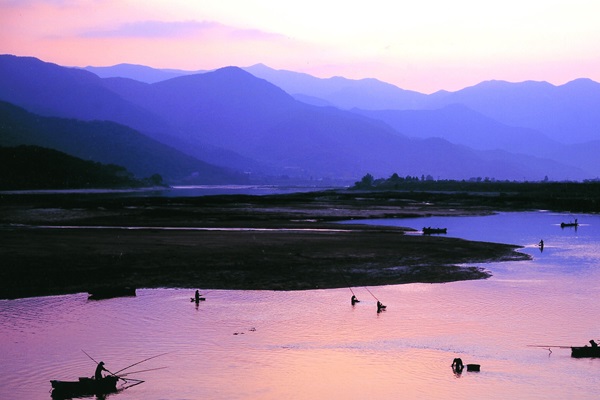
Rome - An area famous for using hand nets to fish for marsh clams in the Seomjingang River Estuary of the Republic of Korea is the latest site to be formally recognized as a GIAHS.
The Sonteul (hand net) Fishery System for Marsh Clam in Seomjingang River Estuary was designated during a meeting of the GIAHS Scientific Advisory Group taking place in Valencia, Spain from 4 to 7 July.
Under the flagship programme of the Food and Agriculture Organization of the United Nations (FAO), the selection criteria stipulate that sites must be of global importance, have value as a public good, supporting food and livelihood security, agro-biodiversity, sustainable knowledge systems and practices, social values and culture as well as outstanding landscapes. Many sites showcase excellent practices to render agrifood systems more resilient to climate change, and use biodiversity and manage ecosystems sustainably, while supporting food production and livelihoods.
A sanctuary for marsh clams
The Sonteul (hand net) Fishery System for Marsh Clam in Seomjingang River Estuary is located in the central west part of the Republic of Korea. In most of the country’s rivers the marsh clam is almost extinct. Against this backdrop, the environmental and ecological diversity of the River basin, bolstered by the local community’s efforts, serves, as a hospitable habitat for this deep-burrowing species.
To catch them, fishers wade into the river and gather marsh clams by scraping the riverbed using a tool known as a georaengyee (hand dredge). This traditional method has proved a sustainable practice, well adapted to the river’s ecological and environmental characteristics, helping to eliminate pollutants sedimented at the bottom of the river while facilitating the provision of new organic material and the generation of aquatic oxygen.
Today, as for many generations, marsh clams are still the main source of food and income for local residents, although they also grow rice, green tea, green plum, persimmon, chestnut, and other agricultural products.
From April to November, the sonteul (hand net) harvesting of marsh clams creates a distinct “cultural landscape”. Capitalizing on this system of traditional fishery, a marsh clam festival is held in every July and the fishery season always draws significant numbers of tourists keen to photograph and experience in person the landscapes and traditional activities.
Sixth site in Republic of Korea
The latest site is the sixth in the Republic of Korea to be designated under the programme. Those already recognised are the Traditional Gudeuljang Irrigated Rice Terraces in Cheongsando (2014); Jeju Batdam Agricultural System (2014); Traditional Hadong Tea Agrosystem in Hwagae-myeon (2017); Geumsan Traditional Ginseng Agricultural System (2018) and Damyang Bamboo Field Agricultural System (2020).
With the newest addition to the global agricultural heritage systems list, FAO’s worldwide agricultural heritage network now consists of 78 systems in 24 countries around the globe. The programme recently held a major event to award certificates to the most recently designated sites and using immersive experiences to celebrate the diversity of GIAHS systems worldwide.